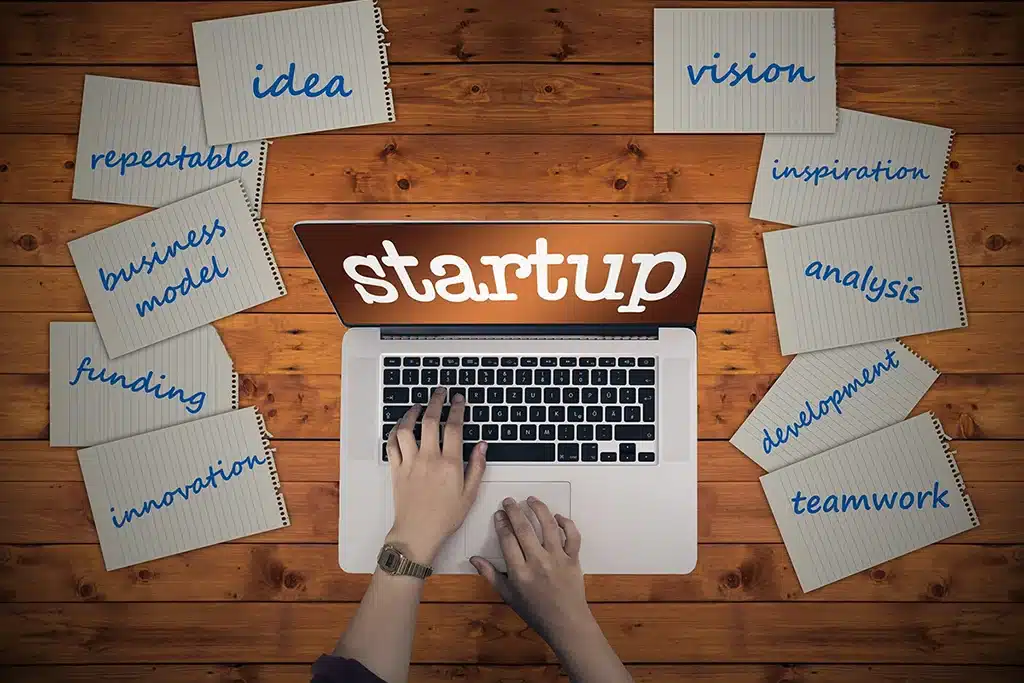Start Freelancing Without Experience in 2025: Ultimate Guide

Introduction: Is Freelancing Without Experience Actually Possible?
Wondering if you can start freelancing without experience in 2025? You absolutely can.
I began in 2023 with zero clients, no portfolio, and no idea what I was doing.
Fast forward 18 months, and I’m earning $4,000 per month working just 25 hours a week—with clients I actually enjoy.
This step-by-step guide will show you exactly how to do the same, even if you’re starting from scratch.
This roadmap is perfect for anyone who wants to start freelancing without experience and build income quickly.
Here’s the truth about freelancing in 2025: It’s simultaneously easier than ever to start (thanks to AI tools and new platforms) yet more competitive than before. The good news? The freelance economy is booming, with Upwork reporting a 22% growth in freelance job postings since 2023, and 71% of hiring managers planning to increase their use of independent professionals.
Whether you’re a student, stay-at-home parent, or career shifter, it’s easier than ever to start freelancing without experience—and still stand out.
This guide isn’t about empty promises—it’s a concrete, step-by-step roadmap to take you from zero experience to your first paying client, potentially within weeks. No fluff, just actionable strategies that work in today’s market.
The 6-Step System: From Zero to Your First Freelance Income
Let’s break down exactly how to start freelancing without experience—even if you’ve never had a paying client before.
Step 1: Choose Your Niche (Without Overthinking)
The biggest mistake new freelancers make isn’t choosing the wrong niche—it’s spending months agonizing over the “perfect” skill to offer. Instead:
Quick self-assessment test: Answer these questions honestly:
- What do friends/family regularly ask your help with?
- What task could you happily spend 3+ hours doing without checking the time?
- What YouTube tutorials do you watch for fun, not just necessity?
If you’re trying to start freelancing without experience, answering these questions can help you quickly discover your most marketable skill.
The most profitable niches for beginners in 2025:
- AI Integration Services
- Examples: Setting up ChatGPT workflows for small businesses, creating custom AI prompts, implementing automation
- Average starting rates: $30-50/hour
- Why it works: Most businesses know they need AI but don’t know how to implement it
- Short-Form Video Creation
- Examples: TikTok/Reels content, 30-second product demonstrations, social media snippets
- Average starting rates: $75-150 per finished video
- Why it works: Massive demand but relatively low competition compared to traditional video
- Micro-Consultation Services
- Examples: 60-minute Zoom calls offering focused advice on specific topics (social media review, website feedback)
- Average starting rates: $50-100 per session
- Why it works: Low commitment for clients, minimal prep work for you
- Local Business Digital Support
- Examples: Basic website updates, Google Business Profile management, simple social media posts
- Average starting rates: $25-40/hour or $200-300/month retainers
- Why it works: Local businesses are underserved and prefer working with individuals over agencies
These entry points make it realistic to start freelancing without experience and still attract serious clients.
Pro tip: Pick one primary skill and one complementary skill. For example: Short-form video (primary) + basic caption writing (complementary).
Still unsure which freelance niche to choose? Take a look at The Top 5 Most Profitable Freelancing Niches in 2025 to help you decide with confidence.

Step 2: Acquire Basic Skills (Quickly and Free)
You don’t need a degree or certification to start freelancing—you need enough practical knowledge to deliver results. One way to learn fast is by using the best online course platforms for freelancers, most of which offer affordable, on-demand skill building.
The 3-week skill acquisition framework:
Week 1: YouTube Immersion
- Spend 1-2 hours daily watching practical tutorials (not theory)
- Recommended channels by niche:
- AI Integration: “PromptEngineering,” “AutomateAll”
- Video Creation: “VideoEditingSimplified,” “TikTokCreators”
- Digital Marketing: “LocalBusinessMarketing,” “SMMAcademy”
Week 2: AI Tool Mastery
- Essential AI tools by niche:
AI Tools for Beginners
| Category | Tool | Use Case |
|---|---|---|
| Writing | ChatGPT | Generate blog posts, emails, cold outreach copy |
| Design | Canva | Design social media posts, logos, PDFs |
| Video Editing | CapCut | Edit short-form videos for TikTok/Reels |
| Analytics | Simple Analytics | Track traffic without complex setups |
| Automation | Zapier | Automate tasks between apps |
Week 3: Practical Application
- Complete at least three real-world projects (can be for yourself, friends, or fictional clients)
- Focus on speed and completion, not perfection
Common mistake: Many beginners spend months “learning” without applying. Aim to have your first sellable skill within 21 days by focusing on one specific deliverable (e.g., not “social media marketing” but “Instagram caption writing for restaurants”). That’s how many people successfully start freelancing without experience and begin landing real clients in just weeks.
Learning just one skill well is often enough to confidently start freelancing without experience and charge for real results.
Step 3: Create a Portfolio (Even Without Experience)
Every client will ask for previous work. If you’re just starting to freelance without experience, here’s how to create compelling samples even without real clients:
Option 1: Self-assigned projects
- Create a fictional business and develop materials for it
- Example: Design a complete Instagram strategy for an imaginary coffee shop
- Pro tip: Make these projects hyper-specific to your target client (e.g., “Social Media Strategy for Downtown Cafés”)
Option 2: Free (but limited) work
- Offer a strictly defined service to 1-2 local businesses
- Example: “I’ll create three TikTok videos for your business at no cost to build my portfolio”
- Critical point: Set clear boundaries (time limit, specific deliverables)
Option 3: Transformation projects
- Find existing content and show how you’d improve it
- Example: “Here’s a local restaurant’s current website and my redesign proposal”
- Works especially well for design, writing, and marketing niches
Portfolio presentation tip: For each sample, include a brief problem statement and your solution approach. For example: “Challenge: Local bookstore needed Instagram engagement. Solution: Created themed book recommendation reels that increased comments by 40%.”
When you start freelancing without experience, results like these—even from mock projects—can make all the difference.
If you’re unsure whether to build a personal website or just a portfolio page, this guide breaks it down: Freelancer Website vs Portfolio: Which One Do You Really Need?
Step 4: Find Your First Clients (Without Platform Competition)
Forget Fiverr and Upwork for now—they’re oversaturated for beginners. Instead:
Local business approach (highest success rate for beginners)
- Make a list of 10-15 small businesses in your area that could benefit from your service
- Research their online presence to find specific improvement opportunities
- Send this personalized outreach template (and for more strategies that actually get replies, read How to Write a Cold Email That Gets Responses From Potential Clients):
Subject: Quick idea for [specific problem] at [Business Name]
Hi [Name],
I noticed your [website/social media/etc.] hasn't been updated since [date] and is missing [specific observation].
I'm a freelance [your service] specializing in helping [type of business] with [specific benefit]. Would you be open to a quick 15-minute chat about how I could help with [concrete result]?
As someone who frequently visits/supports your business, I'd be happy to [small free offer] just to demonstrate what's possible.
Thanks,
[Your Name]
Warm network strategy
- Create a simple announcement post on your personal social media
- Message 5-10 friends who work at relevant companies
- Ask for introductions, not direct work
Micro-platforms with less competition
- Contra.com (no platform fees)
- PeoplePerHour (less competitive than Upwork)
- Local Facebook groups for small businesses
- NextDoor neighbor recommendations section
First client conversion tip: For your initial clients, offer a “pilot project” at a reduced rate rather than pushing for ongoing work immediately. Example: “How about we start with just three Instagram posts for $75 total, and if you’re happy with the results, we can discuss a monthly package?”
Offering low-risk pilot projects is one of the smartest ways to start freelancing without experience and gain client trust.
For a deeper breakdown of where to find high-quality jobs, check out Best Freelancing Platforms to Find High-Paying Clients.
Step 5: Set Your Pricing (Without Undervaluing Yourself)
Pricing psychology is crucial for new freelancers. Too low signals low quality; too high creates pressure. Learn when to charge hourly, fixed, or value-based rates in Freelance Pricing: Hourly vs Fixed Rates.
Beginner-friendly pricing models:
- The Package Approach (recommended)
- Create 3 tiers of service with clear deliverables
- Example for social media:
- Basic: 4 social posts + hashtag research = $200/month
- Standard: 8 posts + engagement strategy = $350/month
- Premium: 12 posts + analytics report = $500/month
- The Project-Based Method
- Set prices based on specific outcomes, not hours
- Example: “Website Audit and Recommendation Report: $150”
- The Value Benchmark
- Calculate pricing based on value to client
- Example: If your service saves a business 5 hours/week and they value time at $40/hour, your monthly service is worth at least $800
Avoid hourly rates initially as they:
- Make clients focus on time rather than value
- Create anxiety about how long tasks take
- Set a ceiling on your earnings
Pricing evolution strategy: Start with rates that feel slightly uncomfortable (usually 30% higher than your instinct suggests), then raise them by 15-20% after every 3-5 successful clients. Smart pricing is essential when you start freelancing without experience—because how you present value matters more than how long you’ve worked.
Step 6: Automate and Scale (The 2025 Strategy)
The most successful freelancers don’t just sell their time—they build systems:
Want to work less and earn more? Learn how to optimize your workflow in The Ultimate Freelance Productivity Guide: Work Smarter, Earn More.
Essential automation for new freelancers:
- Client onboarding automation
- Create a welcome email sequence
- Use Calendly for scheduling
- Develop a standard questionnaire template
- Work delivery systems
- Template libraries for common deliverables
- AI-powered first drafts using ChatGPT
- Revision protocols with clear boundaries
- Passive income elements
- Basic knowledge products (templates, guides)
- Affiliate recommendations for tools you use
- Retainer packages for ongoing work
If you’re ready to level up, this guide shows exactly how to grow your freelance business to six figures: How to Scale Your Freelance Business to $10K/Month.
Practical example: A freelance copywriter can create email templates in Notion, use ChatGPT to generate first drafts, edit them personally, then send them to clients—reducing work time by 65% while maintaining quality.
Common Freelancing Mistakes to Avoid
Mistake #1: “The Race to the Bottom” Pricing
The problem: Many new freelancers charge $5-10 for jobs worth $50-100, believing they need to undercut competitors.
The reality: Ultra-low pricing:
- Attracts problematic clients
- Creates unsustainable workloads
- Signals low-quality work
The solution: Position yourself as an accessible professional, not the cheapest option. A better approach is to compete on specialization or turnaround time rather than price.
Mistake #2: “Portfolio Perfectionism”
The problem: Delaying your launch until you have the “perfect” portfolio with dozens of examples.
The reality: You need just 2-3 solid examples to start. Your early clients care more about your communication and reliability than an extensive portfolio.
The solution: Create 2-3 high-quality, relevant samples and launch within 30 days. You can build your portfolio with real client work as you go.
Mistake #3: “The Verbal Agreement Trap”
The problem: Starting work based on conversations without any written agreement.
The reality: Even small projects need basic protection against scope creep, delayed payments, and misaligned expectations.
The solution: Use a simple but formal agreement. For beginners, a detailed email outlining deliverables, timeline, payment terms, and revision limits is sufficient. Tools like Bonsai offer freelance contract templates.
Mistake #4: “The Skill Hoarding Syndrome”
The problem: Continuously learning new skills without marketing existing ones.
The reality: Income comes from applying and selling skills, not just acquiring them.
The solution: Follow the 80/20 rule: Spend 20% of your time learning and 80% implementing and marketing.
Scaling Up: From $100 to $1,000+ Per Month
Once you’ve secured your first few clients, focus on sustainable growth:
Strategy #1: Convert One-Time Projects to Retainers
Create continuity packages that solve ongoing problems:
- Social media management instead of one-off posts
- Monthly website maintenance instead of one-time fixes
- Regular content creation instead of single articles
Sample pitch: “Now that we’ve created your initial content, would you be interested in a monthly package where I deliver 8 posts for $XXX? This ensures consistent quality and saves you from having to reach out each time.”
Strategy #2: Leverage Client Testimonials Strategically
Don’t just collect testimonials—engineer them:
- Provide clients with specific questions focusing on results
- Request video testimonials when possible (30-60 seconds)
- Create before/after case studies with measurable outcomes
Testimonial request template:
Hi [Name],
Now that we've completed [project], would you mind sharing your experience working with me? Specifically:
1. What problem were you trying to solve when you hired me?
2. What specific results have you seen from our work?
3. What was your favorite part about the process?
A few sentences would be incredibly helpful for my portfolio.
Thanks!
[Your Name]
Strategy #3: Micro-Specialize for Premium Positioning
Specialization is a powerful tool, especially if you want to start freelancing without experience and still position yourself as an expert.
Narrow your focus to command higher rates:
- Instead of “social media management,” offer “TikTok growth for local restaurants”
- Instead of “copywriting,” offer “email sequences for SaaS onboarding”
- Instead of “virtual assistance,” offer “Shopify store management for beauty brands”
The results: Specialized freelancers typically earn 2-3x more than generalists with the same experience level.
Your First-Day Freelancing Action Plan
Don’t overthink—start today with this simple 3-step process:
- Choose one primary skill to offer (the one you’re most comfortable with right now)
- Create one work sample (spend no more than 2 hours on this)
- Send one outreach message to a potential client (use the template provided earlier)
That’s it. Repeat these steps daily for two weeks, and you’ll be significantly ahead of 90% of aspiring freelancers who never move beyond the planning stage.
Remember: Freelancing success isn’t about being the most talented person—it’s about consistently showing up, solving real problems, and gradually improving your skills and systems.
Expert Insights: What Successful Freelancers Wish They Knew
According to Sarah Peterson, founder of Freelance Jumpstart who built a six-figure freelance business from scratch:
“The biggest revelation for me was that clients don’t buy skills—they buy solutions to problems. When I stopped marketing myself as a ‘writer’ and started positioning myself as someone who ‘increases email open rates by 30%,’ my income tripled within three months.”
James Altucher, entrepreneur and former freelancer, adds:
“Start before you’re ready. Your first projects won’t be your best work, but they’re necessary stepping stones. The freelancers who succeed aren’t the most gifted—they’re the ones who kept showing up and improving incrementally.”
FAQ: Getting Started with Freelancing
Do I need a business license to start freelancing?
In most places, you can legally start freelancing as a sole proprietor without formal registration for small amounts of income. However, as you grow, you should consult with a tax professional about local requirements. In the meantime, you can use payment platforms like PayPal or Stripe to receive payments.
How many hours per week do I need to dedicate to make a meaningful income?
Most beginning freelancers can generate $500-1,000 monthly with 10-15 hours of weekly work. The key is focusing on higher-value services rather than commodity tasks. As you become more efficient and increase your rates, you can earn more while working the same or fewer hours.
What if clients ask for experience I don’t have?
This is exactly where those who start freelancing without experience can shine—by showing they understand problems and offer practical solutions.
Reframe the conversation around results rather than years of experience. Demonstrate understanding of their specific problem and outline your process for solving it. For many clients, especially small businesses, your approach and communication matter more than your resume.
Can I freelance while working a full-time job?
Absolutely, many successful freelancers start this way. Just ensure you:
- Check your employment contract for non-compete clauses
- Never use company time or resources for freelance work
- Start with just 5-10 hours per week to prevent burnout
- Focus on clients in different industries than your employer
How do I handle taxes as a freelancer?
As an independent contractor, you’re responsible for your own taxes. Set aside 25-30% of your income for tax obligations. Use free tools like Wave Accounting to track income and expenses, and consider consulting with a tax professional once you reach $1,000 monthly.
Conclusion: Your Freelance Journey Begins Now
Freelancing without experience isn’t just possible—it’s happening every day. The 2025 freelance economy rewards problem-solvers who can leverage technology, regardless of their formal background or years of experience.
The only true barrier to entry is taking that first step. If you’re struggling with consistency or motivation, this guide on overcoming freelancer procrastination could be exactly what you need to stay focused. Choose your skill today, create one sample, and reach out to one potential client. Next week, you might just have your first paying project. It all begins when you make the decision to start freelancing without experience—and take action daily.
Ready for more guidance on your freelance journey? If you’re serious about success, there’s never been a better time to start freelancing without experience and build a career on your own terms. Join my Telegram channel “Freelance Booster” for weekly tips, tools, and opportunities specifically for new freelancers.



